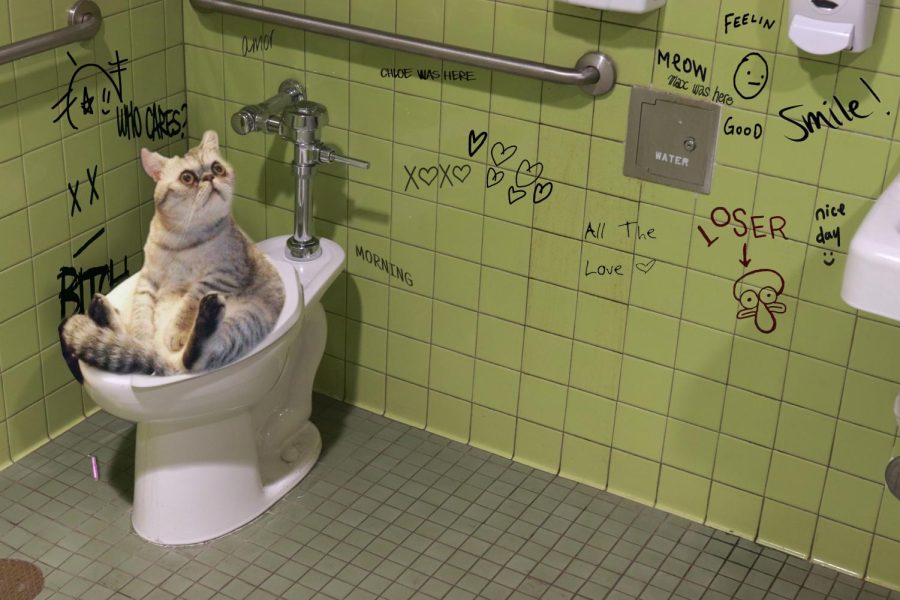The article below relating to Can You Flush Cat Poop Down The Toilet? is particularly entertaining. Read on and make your own assumptions.

Intro
As pet cat owners, it's important to be mindful of how we take care of our feline close friends' waste. While it might seem convenient to purge pet cat poop down the commode, this technique can have detrimental repercussions for both the environment and human health and wellness.
Alternatives to Flushing
The good news is, there are more secure and more responsible methods to throw away pet cat poop. Take into consideration the following alternatives:
1. Scoop and Dispose in Trash
The most common method of throwing away pet cat poop is to scoop it right into an eco-friendly bag and toss it in the garbage. Make certain to make use of a dedicated litter scoop and get rid of the waste immediately.
2. Use Biodegradable Litter
Choose biodegradable feline trash made from materials such as corn or wheat. These clutters are eco-friendly and can be securely taken care of in the garbage.
3. Bury in the Yard
If you have a yard, consider burying feline waste in a designated location away from veggie yards and water sources. Make sure to dig deep enough to prevent contamination of groundwater.
4. Mount a Pet Waste Disposal System
Buy a family pet waste disposal system specifically designed for pet cat waste. These systems make use of enzymes to break down the waste, minimizing odor and environmental influence.
Wellness Risks
In addition to environmental problems, purging feline waste can also posture wellness risks to human beings. Pet cat feces might include Toxoplasma gondii, a parasite that can create toxoplasmosis-- a potentially severe ailment, especially for pregnant females and individuals with weakened body immune systems.
Environmental Impact
Purging feline poop introduces unsafe microorganisms and parasites right into the supply of water, posturing a considerable threat to aquatic ecological communities. These pollutants can adversely impact aquatic life and compromise water high quality.
Conclusion
Accountable pet possession extends past offering food and sanctuary-- it also includes correct waste management. By avoiding flushing feline poop down the commode and opting for alternate disposal approaches, we can decrease our environmental impact and secure human wellness.
Why Can’t I Flush Cat Poop?
It Spreads a Parasite
Cats are frequently infected with a parasite called toxoplasma gondii. The parasite causes an infection called toxoplasmosis. It is usually harmless to cats. The parasite only uses cat poop as a host for its eggs. Otherwise, the cat’s immune system usually keeps the infection at low enough levels to maintain its own health. But it does not stop the develop of eggs. These eggs are tiny and surprisingly tough. They may survive for a year before they begin to grow. But that’s the problem.
Our wastewater system is not designed to deal with toxoplasmosis eggs. Instead, most eggs will flush from your toilet into sewers and wastewater management plants. After the sewage is treated for many other harmful things in it, it is typically released into local rivers, lakes, or oceans. Here, the toxoplasmosis eggs can find new hosts, including starfish, crabs, otters, and many other wildlife. For many, this is a significant risk to their health. Toxoplasmosis can also end up infecting water sources that are important for agriculture, which means our deer, pigs, and sheep can get infected too.
Is There Risk to Humans?
There can be a risk to human life from flushing cat poop down the toilet. If you do so, the parasites from your cat’s poop can end up in shellfish, game animals, or livestock. If this meat is then served raw or undercooked, the people who eat it can get sick.
In fact, according to the CDC, 40 million people in the United States are infected with toxoplasma gondii. They get it from exposure to infected seafood, or from some kind of cat poop contamination, like drinking from a stream that is contaminated or touching anything that has come into contact with cat poop. That includes just cleaning a cat litter box.
Most people who get infected with these parasites will not develop any symptoms. However, for pregnant women or for those with compromised immune systems, the parasite can cause severe health problems.
How to Handle Cat Poop
The best way to handle cat poop is actually to clean the box more often. The eggs that the parasite sheds will not become active until one to five days after the cat poops. That means that if you clean daily, you’re much less likely to come into direct contact with infectious eggs.
That said, always dispose of cat poop in the garbage and not down the toilet. Wash your hands before and after you clean the litter box, and bring the bag of poop right outside to your garbage bins.
https://trenchlesssolutionsusa.com/why-cant-i-flush-cat-poop/

As an avid reader on Can You Flush Cat Poop Down The Toilet?, I figured sharing that section was a smart idea. Enjoyed reading our posting? Please share it. Let other people check it out. We appreciate reading our article about How to Dispose of Cat Poop and Litter Without Plastic Bags.
Schedule Today